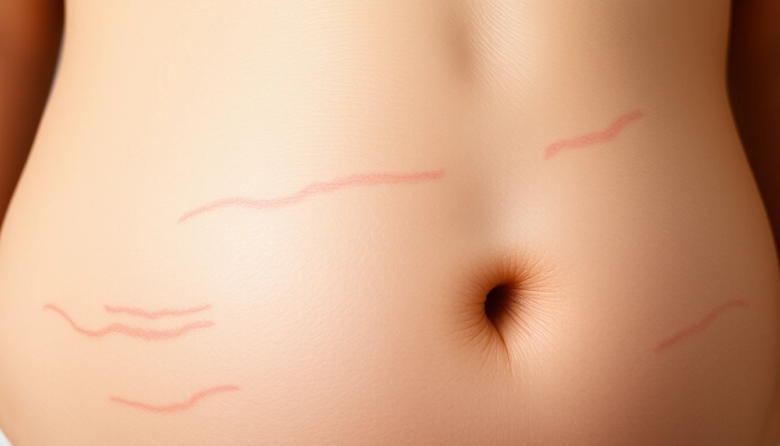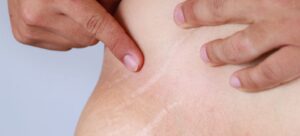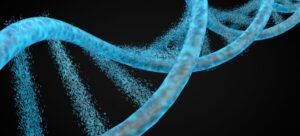Introduction
Stretch marks are a common skin condition that many people experience during various stages of life, yet they remain surrounded by myths, misconceptions, and a lack of clear understanding. Often appearing as linear, dimpled lines on the skin, stretch marks can occur due to rapid changes in body size or hormonal fluctuations, leaving many to wonder about their true origin and what can be done about them. In this article, we aim to look beyond the surface—both literally and figuratively—to explore the scientific causes of stretch marks as well as to debunk the widespread myths associated with them.
Our goal is to provide an evidence-based discussion that examines the cellular, hormonal, and environmental factors contributing to stretch mark formation. By understanding these hidden factors, readers can gain a clearer perspective on prevention, treatment, and self-care strategies. This article is divided into two parts. In Part 1, we will define stretch marks, explore their anatomical and physiological basis, and review the key factors that contribute to their development, along with addressing some common myths. Part 2 will further delve into recent scientific research, emerging treatment modalities, and practical implications for skincare routines and lifestyle adjustments.
What Are Stretch Marks?
Stretch marks, medically known as striae, are visible lines or streaks on the skin that occur when the skin is rapidly stretched or shrinks. They are most commonly found on areas of the body such as the abdomen, thighs, buttocks, and breasts. Although they are not harmful to health, stretch marks are often viewed as a cosmetic concern, leading many to seek ways to prevent or reduce their appearance.
Defining Characteristics
- Appearance:
Stretch marks usually begin as reddish or purplish lines and gradually fade to a more silvery or white color over time. Their texture may be uneven, with a slightly indented or raised surface. - Formation Process:
They result from the tearing of the dermis (the middle layer of skin), particularly when the skin is subjected to rapid stretching. This tearing disrupts the normal alignment of collagen and elastin fibers, which are crucial for maintaining skin firmness and elasticity.
The Physiological Mechanism
At a cellular level, the development of stretch marks involves several interrelated processes:
- Collagen and Elastin Fiber Disruption:
When the skin is stretched too quickly, the collagen and elastin fibers in the dermis can rupture. These fibers normally provide support and elasticity, and their damage leads to the characteristic lines seen in stretch marks. - Adipocyte Pressure:
In areas where fat deposits are present, the expansion of adipocytes (fat cells) can exacerbate the stretching of the skin, intensifying the formation of striae. - Repair and Scar Formation:
The body’s natural healing process leads to the formation of scar tissue, which lacks the normal strength and elasticity of healthy skin, resulting in the permanent appearance of stretch marks.
Factors Influencing Stretch Mark Formation
Stretch marks are multifactorial in nature, meaning that several biological, hormonal, and environmental factors contribute to their development. Understanding these factors is essential for debunking common myths and guiding effective prevention and treatment strategies.
Biological and Hormonal Factors
Genetics
- Inherited Predisposition:
Genetics play a significant role in determining who develops stretch marks. Some individuals may have a genetic makeup that predisposes their skin to a lower elasticity, making them more susceptible when exposed to rapid stretching. - Family History:
A family history of stretch marks may indicate a higher likelihood of developing them, even in individuals with a healthy body composition.
Hormonal Changes
- Role of Estrogen:
Hormones, particularly estrogen, significantly influence the development of stretch marks. Estrogen affects fat distribution and collagen production, which is why stretch marks are more common in women and can appear during periods of hormonal fluctuation, such as puberty, pregnancy, or menopause. - Corticosteroids and Other Hormones:
The use of corticosteroids and imbalances in other hormones, like insulin and thyroid hormones, can also impact skin elasticity and contribute to the formation of stretch marks.
Age and Skin Elasticity
- Aging Effects:
As skin ages, its collagen and elastin fibers deteriorate, reducing skin elasticity. This natural aging process makes the skin more vulnerable to stretching and the development of stretch marks. - Intrinsic vs. Extrinsic Aging:
Intrinsic aging refers to the natural decline in skin function over time, while extrinsic aging results from environmental factors such as sun exposure and pollution. Both types can exacerbate the appearance of stretch marks.
Lifestyle and Environmental Influences
Diet and Nutrition
- Nutritional Impact:
A balanced diet rich in vitamins, minerals, and antioxidants is essential for maintaining skin health. Nutritional deficiencies, particularly in vitamins C and E, can impair collagen production and exacerbate skin damage. - Hydration:
Proper hydration is crucial for skin elasticity. Dehydrated skin is more prone to tearing under stress, which can lead to the formation of stretch marks.
Physical Activity and Weight Fluctuations
- Rapid Weight Changes:
Quick increases or decreases in weight can place significant strain on the skin, leading to the formation of stretch marks. This is common during periods of rapid growth, such as puberty or pregnancy. - Muscle Tone and Circulation:
Regular exercise improves circulation and muscle tone, which can help reduce the appearance of stretch marks. However, extreme or rapid muscle growth without adequate skin adaptation can also contribute to their development.
External and Environmental Factors
- Lifestyle Habits:
Habits such as smoking and excessive alcohol consumption negatively affect skin health by reducing blood flow and damaging collagen. These factors can increase the likelihood of stretch mark formation. - Stress and Sleep:
Chronic stress and inadequate sleep can disrupt hormonal balance and impair the skin’s ability to repair itself, thereby contributing to the development of stretch marks. - Environmental Pollutants:
Exposure to pollutants and toxins can damage skin cells and hinder the production of collagen, making the skin less resilient and more prone to stretch mark formation.
Debunking Common Myths
Despite extensive research, many myths about stretch marks persist. Let’s address some of the most common misconceptions with evidence-based insights.
Myth 1: Stretch Marks Only Occur in Overweight Individuals
- Scientific Reality:
While excess weight can contribute to the appearance of stretch marks, they can develop in individuals of any body type. Factors such as genetics, hormonal changes, and rapid growth spurts are significant contributors, meaning that even lean individuals can develop stretch marks.
Myth 2: Stretch Marks Can Be Completely Eliminated with Creams and Lotions
- Scientific Reality:
Topical treatments may improve the appearance of stretch marks temporarily by hydrating the skin and promoting collagen production. However, once stretch marks form due to the structural damage in the dermis, they cannot be completely removed. Treatments can reduce their appearance but not entirely erase them.
Myth 3: Stretch Marks Are a Sign of Poor Health
- Scientific Reality:
Stretch marks are a natural response to the physical changes in the body, such as rapid growth or hormonal shifts. They are not necessarily indicative of an underlying health problem. In fact, they are a common and normal part of life for many people.
Overview of Current Research Approaches
Recent scientific advances have provided deeper insights into the formation of stretch marks. Researchers are examining the interplay of various factors at the molecular and cellular levels, which has led to new diagnostic techniques and innovative treatment approaches.
Multifactorial Nature of Stretch Marks
- Interconnected Causes:
Research shows that stretch marks result from a complex interplay between mechanical stretching, hormonal influences, and genetic predisposition. This multifactorial understanding has debunked the oversimplified views that have long surrounded the condition. - Role of Inflammation:
Studies indicate that chronic, low-grade inflammation may contribute to the weakening of collagen and elastin fibers, further exacerbating stretch mark formation. This has paved the way for treatments aimed at reducing inflammation in the skin.
Advances in Diagnostic Technologies
- High-Resolution Imaging:
Tools such as high-resolution ultrasound and MRI are being used to study the microstructure of the skin. These imaging techniques help researchers visualize changes in the collagen and elastin network, offering insights into the progression of stretch marks. - Molecular and Genetic Studies:
Ongoing research into the genetic markers and molecular pathways involved in skin repair is uncovering new targets for therapy. These studies are critical for developing personalized treatment strategies that address the specific factors contributing to stretch marks in individual patients.
Conclusion of Part 1
In Part 1 of “Beyond the Surface: Exploring the Causes and Myths of Stretch Marks,” we have established a comprehensive understanding of what stretch marks are, delved into the cellular and biological mechanisms behind their formation, and examined the various factors—both internal and external—that influence their development. We have also debunked several common myths with scientific evidence and provided an overview of current research approaches that are shaping the future of stretch mark treatment.
Beyond the Surface: Exploring the Causes and Myths of Stretch Marks
Innovative Treatments and Emerging Modalities
As our understanding of stretch marks deepens, the development of innovative treatments and emerging modalities is paving the way for more effective management of this common skin condition. In this section, we explore various therapeutic approaches that are being investigated and implemented to reduce the appearance of stretch marks, drawing on the latest scientific research.
Non-Invasive and Minimally Invasive Therapies
Recent advances in cosmetic dermatology have led to the creation of several non-invasive and minimally invasive treatments designed to improve skin texture and stimulate collagen production. These treatments target the underlying mechanisms of stretch mark formation, rather than simply masking their appearance.
Laser Therapy
- Mechanism of Action:
Laser therapy uses focused light energy to penetrate the skin and stimulate collagen remodeling. By targeting both the fat cells and the dermal matrix, lasers help improve skin elasticity and reduce the contrast between the affected and surrounding areas. - Types of Laser Treatments:
- Fractional Laser Resurfacing: This technique works by delivering laser energy in microscopic zones, stimulating new collagen formation while leaving surrounding tissues intact.
- Pulsed Dye Laser: Known for its ability to reduce redness and improve overall skin tone, the pulsed dye laser can also play a role in softening the appearance of stretch marks.
- Benefits and Limitations:
Laser treatments can produce significant improvements with minimal downtime. However, they may require multiple sessions and can be costly. The suitability of laser therapy varies based on skin type and the severity of the stretch marks.
Radiofrequency and Ultrasound
- Radiofrequency (RF) Treatments:
RF therapy uses radio waves to generate heat within the skin, thereby stimulating collagen production and tightening loose tissues. It has shown promise in reducing the depth and visibility of stretch marks. - Ultrasound Therapy:
Ultrasound treatments, such as high-intensity focused ultrasound (HIFU), target deeper layers of the skin to promote tissue remodeling. Ultrasound energy can enhance blood flow and encourage the synthesis of collagen and elastin fibers. - Combined Modalities:
Some practitioners combine RF and ultrasound treatments to maximize their benefits. The synergy between these modalities can lead to improved skin texture and reduced prominence of stretch marks.
Microneedling
- Procedure Overview:
Microneedling involves the use of a device with fine needles to create controlled micro-injuries in the skin. This process triggers the body’s natural wound-healing response, resulting in the production of new collagen and elastin. - Enhancements with Topical Applications:
The efficacy of microneedling can be enhanced by applying topical treatments, such as hyaluronic acid, peptides, or growth factors, immediately after the procedure. This combination can further stimulate skin regeneration. - Considerations:
While microneedling is minimally invasive and has a relatively quick recovery time, it is important to ensure proper sterilization and technique to avoid complications such as infection or scarring.
Evidence-Based Skincare Recommendations
Translating scientific research into practical skincare regimens is crucial for managing stretch marks effectively. In this section, we discuss skincare recommendations that are supported by evidence and can be incorporated into daily routines to improve skin health and resilience.
Choosing the Right Skincare Products
- Active Ingredients:
Research suggests that certain active ingredients can promote collagen synthesis and improve skin elasticity:- Retinoids:
Retinoids are derivatives of vitamin A known to boost collagen production. They can help improve skin texture and reduce the appearance of stretch marks, though they may cause irritation in sensitive skin. - Peptides:
Peptides support skin repair and regeneration. They are often included in anti-aging products and can help to firm the skin over time. - Antioxidants:
Ingredients such as vitamin C, vitamin E, and green tea extract protect the skin from oxidative stress and support collagen integrity. - Caffeine:
Topical caffeine is known for its temporary tightening effect on the skin and may help diminish the appearance of stretch marks through increased circulation.
- Retinoids:
- Formulation Considerations:
Opt for products that are specifically formulated for sensitive or aging skin, and choose those that are non-comedogenic and free from harsh chemicals. Water-based formulations with low VOCs are preferred, as they are less likely to cause irritation while still delivering active ingredients effectively.
Daily Skincare Routine for Stretch Mark Management
Establishing a consistent skincare routine is essential to support overall skin health and mitigate the appearance of stretch marks. A comprehensive routine may include the following steps:
- Cleansing:
Use a gentle, hydrating cleanser to remove impurities without stripping the skin of its natural oils. - Exfoliation:
Regular exfoliation helps to remove dead skin cells and promote cell turnover. Choose a mild chemical exfoliant (such as glycolic acid) over harsh physical scrubs to avoid damaging the skin. - Moisturizing:
A high-quality moisturizer enriched with hydrating ingredients like hyaluronic acid is essential. Moisturizers help to maintain skin elasticity and create a barrier against environmental stressors. - Targeted Treatments:
Apply serums or creams containing retinoids, peptides, or antioxidants to areas prone to stretch marks. These treatments should be applied after cleansing and before moisturizing for optimal absorption. - Sun Protection:
Sunscreen is a vital component of any skincare routine. UV radiation can exacerbate skin damage and hinder the skin’s natural repair processes, making sun protection crucial for preventing further deterioration of stretch marks.
Lifestyle Adjustments for Skin Health
While skincare products play a significant role, lifestyle factors are equally important in managing stretch marks. Incorporating holistic changes can enhance the effectiveness of topical treatments and promote overall skin resilience.
Nutritional Considerations
- Balanced Diet:
A nutrient-rich diet supports skin health from the inside out. Foods high in vitamins A, C, and E, along with omega-3 fatty acids, can promote collagen production and reduce inflammation. - Hydration:
Staying well-hydrated is fundamental for maintaining skin elasticity. Aim to drink sufficient water throughout the day to keep your skin plump and resilient. - Antioxidant-Rich Foods:
Incorporate fruits, vegetables, nuts, and seeds that are high in antioxidants. These foods help combat oxidative stress, which can contribute to the deterioration of collagen and elastin fibers.
Physical Activity and Stress Management
- Regular Exercise:
Exercise improves circulation, which is essential for delivering nutrients to the skin and removing toxins. Activities such as strength training and cardiovascular exercise can help maintain muscle tone and support skin structure. - Stress Reduction Techniques:
Chronic stress can adversely affect skin health by disrupting hormonal balance and increasing inflammation. Practices such as yoga, meditation, and mindfulness can help reduce stress and promote a healthier overall environment for skin regeneration. - Adequate Sleep:
Quality sleep is essential for skin repair and regeneration. Aim for 7-9 hours of uninterrupted sleep each night to allow your body to recover and rejuvenate.
Advanced Preventative Measures and Long-Term Care
In addition to daily routines and lifestyle adjustments, advanced preventative measures can further reduce the impact of stretch marks over time. These measures are designed to complement your regular skincare routine and ensure long-term skin health.
Professional Consultations and Treatments
- Dermatological Assessments:
Regular consultations with a dermatologist can help monitor skin health and detect early signs of stretch mark formation. Personalized advice from a professional can guide the selection of treatments and preventative strategies. - In-Office Procedures:
For individuals with significant stretch mark concerns, professional treatments such as microneedling, chemical peels, or laser therapy may be recommended. These procedures can provide targeted stimulation of collagen production and more dramatic improvements in skin texture.
Ongoing Research and Adaptation
As scientific understanding of stretch marks continues to evolve, staying informed about the latest research and treatment innovations is crucial. Consider subscribing to reputable skincare journals, attending conferences, or joining online communities where professionals and enthusiasts share new findings and experiences.
- Adaptability:
Be open to adjusting your routine as new treatments or ingredients become available. What works well today might be improved upon by emerging research in the future. - Holistic Approach:
Embrace a comprehensive approach that integrates skincare, lifestyle adjustments, and professional guidance. This holistic strategy ensures that all aspects of skin health are addressed, leading to more sustainable long-term results.
Conclusion
The journey to understanding and managing stretch marks is multifaceted, involving intricate cellular mechanisms, hormonal influences, and a variety of lifestyle and environmental factors. In Part 2 of “Beyond the Surface: Exploring the Causes and Myths of Stretch Marks,” we have explored innovative treatment modalities, practical skincare recommendations, and lifestyle adjustments that can collectively improve skin health and mitigate the appearance of stretch marks.
Recap of Key Points
- Innovative Treatments:
Non-invasive therapies such as laser treatment, radiofrequency, ultrasound, and microneedling provide promising avenues for stimulating collagen production and reducing the visibility of stretch marks. - Skincare Recommendations:
An evidence-based skincare routine, featuring active ingredients like retinoids, peptides, and antioxidants, can help strengthen the skin’s structure and improve its overall texture. - Lifestyle Adjustments:
A balanced diet, regular exercise, proper hydration, and effective stress management play crucial roles in supporting skin health from within. - Advanced Preventative Measures:
Regular professional consultations and the willingness to adapt to emerging research are vital for long-term management of stretch marks.
Final Thoughts
Understanding the hidden factors behind stretch mark formation empowers you to take a proactive approach to skin health. By integrating innovative treatments with evidence-based skincare and comprehensive lifestyle changes, you can effectively manage and reduce the appearance of stretch marks. While complete elimination may not be possible, significant improvements in skin texture and resilience are within reach.
We hope that this comprehensive exploration has provided you with valuable insights and practical strategies to address stretch marks. With continued research and a holistic approach, the future of stretch mark treatment holds promise for more effective and personalized solutions. Thank you for joining us on this journey of discovery, and we encourage you to stay informed, ask questions, and embrace a proactive approach to your skincare routine.




